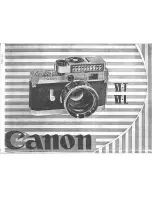
United States Federal Communications Commission, Code of Federal Regulations; 47CFR part 2
sub-part J;
American National Standards Institute (ANSI)/Institute of Electrical and Electronic Engineers (IEEE)
C95. 1-1992;
Institute of Electrical and Electronic Engineers (IEEE) C95.1-1999;
International Commission on Non-Ionizing Radiation Protection (ICNIRP) 1998;
FCC/IC Regulations
Federal Communication Commission (FCC) requires that all radio communication products should meet
the requirements set forth in the above standards before they can be marketed in the U.S, and the
manufacturer shall post a RF label on the product to inform users of operational instructions, so as to
enhance their occupational health against exposure to RF energy.
Operational Instructions and Training Guidelines
To ensure optimal performance and compliance with the occupational/controlled environment RF energy
exposure limits in the above standards and guidelines, users should transmit not more than 50% of the
time and always adhere to the following procedures:
Antenna gain must not exceed
9.6
dBi.
The antenna must be installed complying with the requirements of manufacturer or supplier, and it
must be at least
2
meters away from human body.
Note: Use the accessories specified by Hytera only. If not, Hytera shall not be liable for any losses or
damages arising out of use of unauthorized accessories.
FCC Radiation Exposure
This equipment complies with FCC radiation exposure limits set forth for an controlled environment. This
equipment should be installed and operated with minimum distance
20
0cm between the radiator and your
body. This transmitter must not be co-located or operating in conjunction with any other antenna or
transmitter.
FCC Statement
This equipment has been tested and found to comply with the limits for a Class B digital device, pursuant to
part 15 of FCC Rules. These limits are designed to provide reasonable protection against harmful
interference in a residential installation. This equipment generates and can radiate radio frequency energy. If
not installed and used in accordance with the instructions, it may
cause harmful interference to radio
communications. However, there is no guarantee that interference will not occur in a particular installation.
Verification of harmful interference by this equipment to radio or television reception can be determined by
turning it off and then on. The user is encouraged to try to correct the interference by one or more of the
following measures:





































